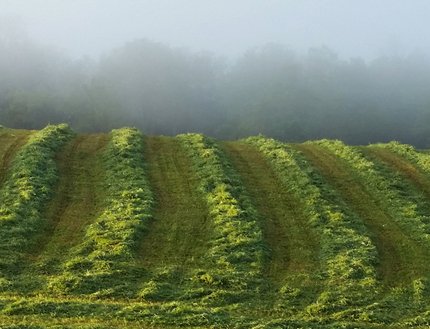5585 Guilford Road • Madison, WI 53711-5801 • 608-273-8080 • Fax 608-273-2021
www.agronomy.org
Twitter | Facebook
NEWS RELEASE
Contact: Hanna Jeske, Associate Director of Marketing and Brand Strategy, 608-268-3972, hjeske@sciencesocieties.org
Do crops have different metabolisms—like people?
Feb. 25, 2019 – Crop differences go beyond appearance and taste. Certain plants are more efficient in how they grow and reproduce. The Feb. 22 Sustainable, Secure Food blog explains how this difference in plant metabolism is important for future food security.
 According to blogger Amanda Ramarchan, “In the 1960s, plant scientists began to discover the differences in plant metabolism. They are now categorized into three types: the C3 and C4 metabolic pathways, and CAM photosynthesis. C4 and CAM plants have adaptations that help them survive in hot, dry areas. Their adaptations have to do with the way they are able to use carbon dioxide. The discovery of these different metabolic pathways in plants is important to our world, and could lead to discoveries to help us adapt more crops to climate change.” Ramcharan is a researcher at Pennsylvania State University.
According to blogger Amanda Ramarchan, “In the 1960s, plant scientists began to discover the differences in plant metabolism. They are now categorized into three types: the C3 and C4 metabolic pathways, and CAM photosynthesis. C4 and CAM plants have adaptations that help them survive in hot, dry areas. Their adaptations have to do with the way they are able to use carbon dioxide. The discovery of these different metabolic pathways in plants is important to our world, and could lead to discoveries to help us adapt more crops to climate change.” Ramcharan is a researcher at Pennsylvania State University.
Grasses, maize, sugar cane, and sorghum are examples of C4 plants. “Even though C4 plants make up close to 5% of our Earth’s plant biomass, they account for 30% of carbon fixation on land! This means that this hard-working type of plant is doing some heavy lifting—capturing carbon from the atmosphere better than their C3 counterparts, and turning that carbon into food for itself (and in turn for us).”
CAM plants are mostly succulent plants surviving under harsh conditions. “CAM plants express the most flexible photosynthesis known and can live and photosynthesize even in the virtual absence of water and carbon dioxide,” Ramcharan says.
“Further study and understanding of this relatively new area of science can help provide us with more creative solutions for increasing our food security while adapting to climate change. Who knows, maybe succulents will be on the dinner menu in the future!”
To read the complete blog, visit Sustainable, Secure Food at https://sustainable-secure-food-blog.com/2019/02/22/do-crops-have-different-metabolisms-like-people.